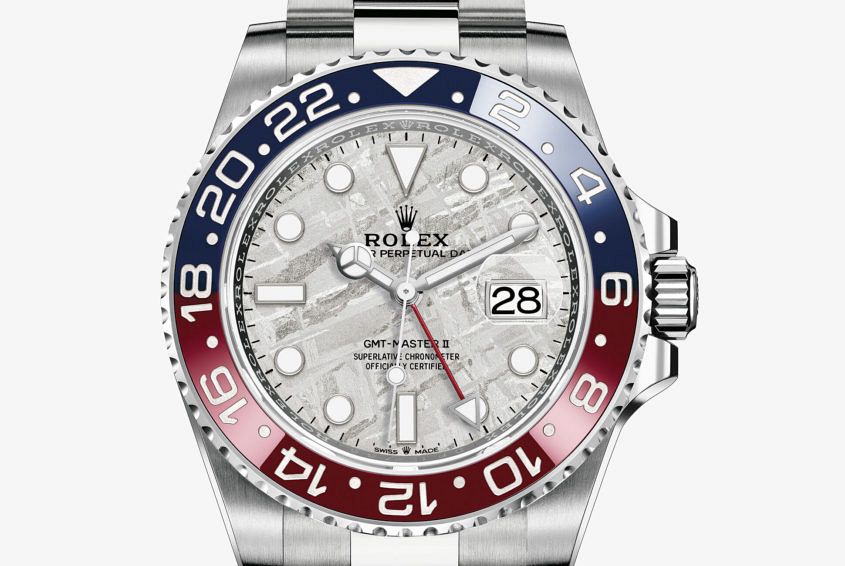 It isn’t every day you look out the window and see a meteor shower. In fact, it’s a newsworthy event when anyone is lucky enough to catch one on film. So I don’t think you would be going out on a limb to say that they are fairly uncommon events, causing you to assume that meteorite is a pretty rare mineral to come by, and it must be very expensive. How then are so many watch companies producing timepieces with meteorite dials? One of the most talked about watches from Baselworld 2019 was a white gold Rolex GMT-Master II with a meteorite dial, the distinctive geometric patterns on the thin slice of rock making for an attractive watch. But the question that came to some people is where do Rolex meteorite dials come from? The folk at Gear Patrol were also perplexed by this set of circumstances, so they did a little digging to find out more and published what they found here. As it turns out, there are a few challenges in working with this exotic material.
It isn’t every day you look out the window and see a meteor shower. In fact, it’s a newsworthy event when anyone is lucky enough to catch one on film. So I don’t think you would be going out on a limb to say that they are fairly uncommon events, causing you to assume that meteorite is a pretty rare mineral to come by, and it must be very expensive. How then are so many watch companies producing timepieces with meteorite dials? One of the most talked about watches from Baselworld 2019 was a white gold Rolex GMT-Master II with a meteorite dial, the distinctive geometric patterns on the thin slice of rock making for an attractive watch. But the question that came to some people is where do Rolex meteorite dials come from? The folk at Gear Patrol were also perplexed by this set of circumstances, so they did a little digging to find out more and published what they found here. As it turns out, there are a few challenges in working with this exotic material.
The post RECOMMENDED READING: Rare rocks? The truth about Rolex meteorite dials appeared first on Time and Tide Watches.
Continue reading ‘RECOMMENDED READING: Rare rocks? The truth about Rolex meteorite dials’
